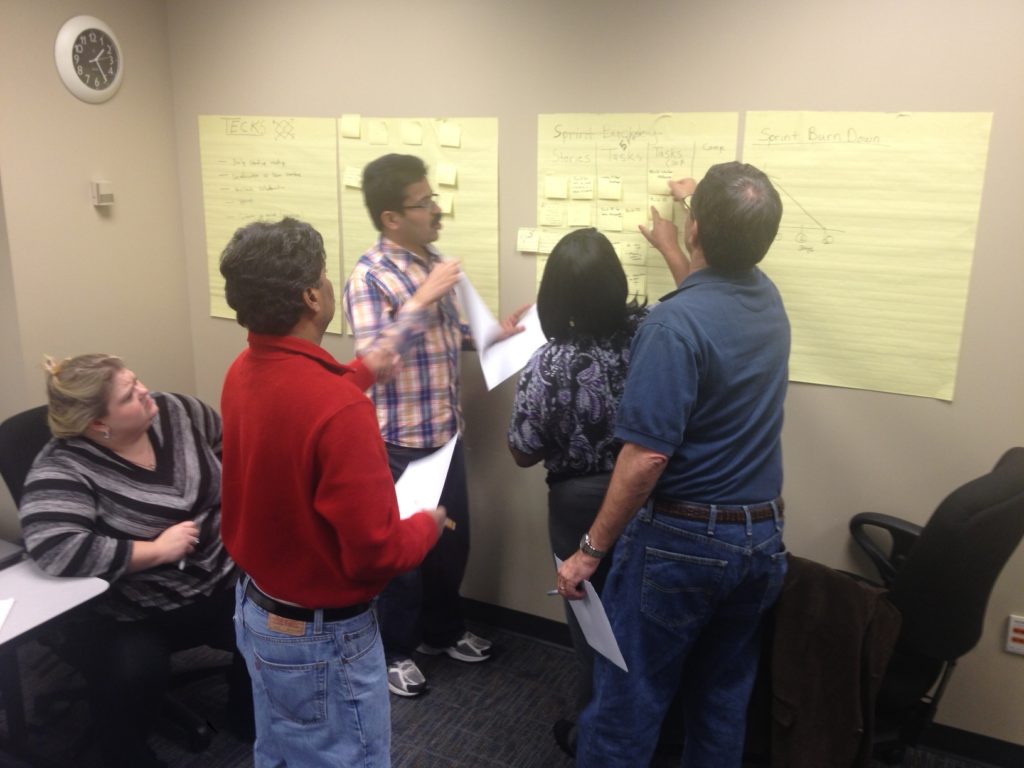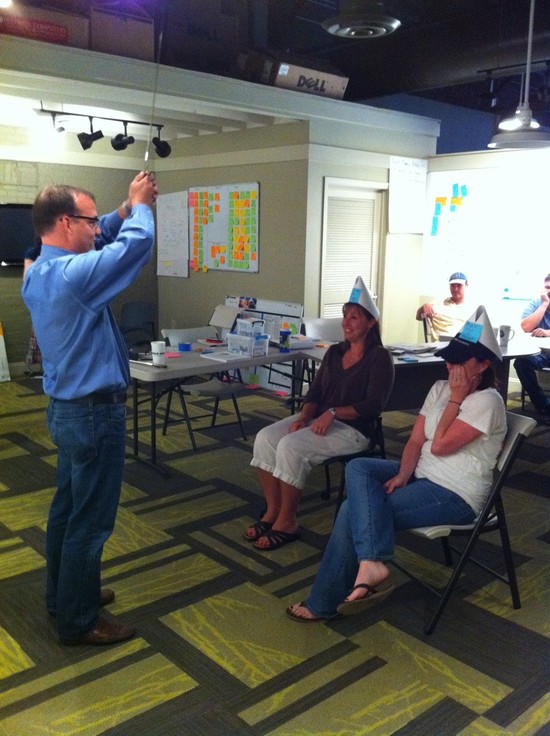FAQ on Career Path of Scrum Product Owners for Management

As Agile and Scrum grows deeper into the market it is valuable for Management to communicate the rewarding and desirable career path that a Scrum Product Owner can have… even beyond just leading single Scrum Product Teams.
Make sure to check out our other resources as well!
- FAQ – The Most Common Questions about Product Owners for Management
- Top 10 Product Owner Characteristics
- Top 10 Backlog Tips for Product Owners
Career Paths for Scrum Product Owners
Q. Are there multiple types of PO? If so how are they different and how do they work together?
A. See earlier questions under “Product Owner Role & Organization” that describe how Release Product Owner and team Product Owner roles work as a team with a “single voice” on priority and acceptance decisions.
Q. What are possible steps in Product Owner career path?
A. A PO may start out working as part of a PO team as team Product Owner, or they may begin as PO for a single team product.
- Product Owner I – Trained Entry Level Product Owner
- Product Owner II – Experienced w/ Continuing Ed (From Score Card requires 12 months)
- Senior Product Owner – Release PO responsibilities for a major product; typically leading a PO team and/or working with multiple Scrum Teams. Should be both trained and experienced and meet continuing education requirements. 3-5 years combined program management, Agile/Scrum, and Product Owner experience.
- Principal Product Owner – TBD. 5-8 years combined project, program, Agile/Scrum, and Product Owner experience.
Q. What is difference in job title for RPO vs team PO roles?
A. See Career path steps above
Q. What is the next step in the Career Path for a product owner? Is it to Product Management?
Q. What are some possible stepping off points into other jobs or roles?
A. Product Owners could potentially transition either to or from Development Management or Product Management. There are multiple paths to and from a Product Owner position. It could also be back to a prior contributor job or another professional position, or leadership role.
Q. What qualifies as continuing education and who needs to approve it?
A. Example Continuing Education Activities include:
- Internal, onsite, or public Agile training classes
- Agile topic meetings at local professional organizations
- Agile workshops and seminars
- National or International Agile software development conferences such as Agile 20xx
Management has budget approval of the individual’s costs for attending continuing education. The company’s Director, Agile Methods publishes guidelines for qualified continuing education activities and may review and revise these from time to time with input from Scrum Masters and management.
Q. What professional certifications are applicable to a Product Owner?
A. The Scrum Alliance offers one level of certification:
Q. Should the company support and pay for people to be certified?
A. Not necessarily, the company will pay for Product Owners to maintain membership and certification for approved professional organizations, but not necessarily to obtain CSPO certification.
Q. Is Certified Scrum Product Owner (CSPO) required to become and serve as a Product Owner?
A. No, Certification is not required for Product Owners but CSPO or equivalent training is. See “What training is required…” question below under Inputs section.
Q. How is the pay scale determined for a Product Owner?
A. HR should determine market value for common industry jobs that are similar to product owner responsibilities
Q. What recognition and reward do I receive as a Product Owner?
A. Compensation and recognition for Product Owner position should reflect the level of responsibility and market value.
Inputs
Q. Who is eligible to become a Product Owner?
Q. Who selects / approves Product Owner candidates?
A. Development Executives will ultimately determine who is eligible based on their confidence in an individual’s leadership abilities for Product Owners. Key stakeholders such as Product Managers should be involved in selection.
Q. Where would candidate Product Owners come from?
A. May come from BA’s, Developers, Development Manager, Product Manager, Project Managers etc. where Some have more industry experience and some have more technical experience.
Q. How does someone start out? What training or accreditation is a prerequisite?
Q. What training is required to become a Product Owner?
A. CSPO training or equivalent is required. This may be satisfied by The company on-site courses taught following a CSPO based material, or by completing Certified ScrumMaster training plus one day of internal The company Product Owner training.
Q. Why should managers encourage their most qualified people to consider the Product Owner role?
A. For people who are seeking a challenging leadership growth opportunity this is a good opportunity for development. Product development quality and effectiveness is highly dependent on product owners to drive requirements through completion and is therefore a critical role for succeeding with Scrum.
Exits
Q. What are my options when I no longer want to be a PO?
A. See Pathways above, “There are multiple paths to and from a Product Owner position. It could also be back to a prior contributor job or another professional position, or leadership role.”
Good questions to pursue through training, self directed learning, and continuing education:
Q. How should product owners get input from stakeholders?
Q. How do product owners work across products to see that functionality syncs up & integrates properly?
Q. How do you blend customer commitments with feature work?
Q. How do management stakeholders get input into the backlog?
Q. How do PO’s work with UX/UI?
Q. How does the Product Owner engage with the UI/UX Teams on Customer Needs & Requirements?
Q. How does a PO develop acceptance criteria?
Q. How do Product Owners work across products together, especially if work done in different sprints for different teams?
Q. Are Product Owners focused on the current release, future releases, gathering customer feedback, etc? Is that multi-tasking successful?
Q. Are there tasks Product Owners do today that would be better suited for a separate role such as Business Analyst or usability lead?
Q. How do you blend customer commitments with feature work? (Item we already had…suggestion was to include ‘and technical debt’.
Q. How does product owner deal with individual performance as an impediment?
Q. How does Scrum team give input to PO?
Q. What should a scrum team do if their PO is not fulfilling their part of the deal?




Responses